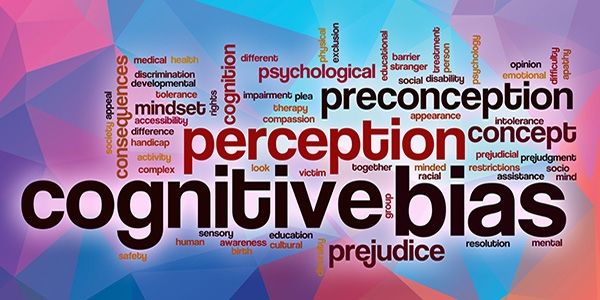AI and the Digital BA—What’ It All About? Part 1
In this three-part article I’ll answer some of the questions that I am frequently asked about artificial intelligence (AI)
and the role of the BA (business analyst) in helping guide organizations in developing and implementing their AI strategies. In Part 1 I’ll address some common terms and issues relating to AI as it is used in a business context. In Part 2 I’ll focus on various roles BAs can play on AI initiatives and detail some of the more common pitfalls. In part 3 I’ll discuss various topics including the need for governance on AI efforts, the digital PM, and the AI translator.
What is AI?
These days the term “AI” is being used as an umbrella term that encompasses all digital technologies, such as machine learning, predictive analytics, RPA (robotics process automation), etc. In today’s common usage we think of AI at its most fundamental level—any time machines act like humans, that’s an aspect of AI.
Machine learning, another common term, is a kind of AI. When machines use predictive models and massive amounts of historical data, they learn, make predictions, and provide insights. As new data comes in, they keep learning and improving and are able to make better predictions and provide better insights
It seems like most organizations are jumping on the AI bandwagon. Why is AI so important?
During the dot-com boom in the late 90s I asked the same question of a presenter talking about ecommerce. She explained it to me by saying, “everyone’s looking for that next get rich quick scheme. A hundred years ago it was the gold rush. Today it’s ecommerce.” While I would never say that AI is a get rich quick scheme, there is a nugget of truth (pardon the gold rush reference). But I would phrase it differently. Organizations realize that they need to adapt to their environment in order to survive. Survival of the fittest if you will. And today’s environment requires at least some element of AI.
How successful are most companies with their AI efforts?
In a recent survey by Harvard Business Review[i] 72% of organizations said they were not getting the value out of their AI projects that they were expecting. The article stated that 40% of the problems were caused by an ill-defined problem and/or product. In other words, what’s typically lacking is something that BAs do so well—define the business problem to be solved, recommend solutions, and then define the requirements of the solution. Neglecting these things can wreak havoc on any project, as these statistics point out. According to the same article another 40% of the issues are due to bad data, another of the BA’s many bailiwicks. Only 20% of the problems are due to the algorithms themselves, but that’s where many companies put 80% of their resources.
BAs can help organizations avoid 80% of the pitfalls mentioned in this survey. If organizations involve BAs to help recommend solid AI strategies and implementation plans, these efforts would be more successful.
What is digital fluency?
Digital fluency is defined as “The ability to effectively and ethically interpret information, discover meaning, design content, construct knowledge, and communicate ideas in a digitally connected world.” [ii] There are a few points in this definition that are worth highlighting.
- Instead of efficiency and effectiveness, the emphasis is on being effective and ethical. This is because ethics is so important in our digital world. The concept of digital trust has risen in priority, so this competency requires not just speaking the digital language, but also understanding the ethical impacts of AI on organizational decisions.
- Digital fluency requires the ability to do what BAs have always done. We discover meaning by eliciting information in a variety of ways. We design content when we model the future state. We construct knowledge by connecting the dots and putting the disparate pieces of information together. We communicate ideas to a variety of stakeholders in a variety of ways, always translating and interpreting the technical complexity so that stakeholders can understand and make good decisions.
- Our world is digitally connected, so we need to do what we have always done—considering that it will be done by a broader range of stakeholders anywhere, anytime, on any device.
What is a digital business analyst (BA)?
I‘m fond of saying that a digital BA is a BA who helps organizations figure out what’s the best approach to take on digital transformation projects. Digital BAs help organizations make the best use of AI. They help organizations recognize and avoid common implementation pitfalls and risks.
A recent study by IIBA in conjunction with UST Global describes the digital BA as someone who guides organizations as they develop their AI strategies. Once that strategy is created, the digital BA “validates, supports, and executes” that strategy. [iii]
In other words, a digital BA is a trusted advisor who helps organizations with their AI strategies. Importantly, they do not create any digital strategies. They provide their advice through expert recommendations.
What skills does a digital BA need?
We still need to do business analysis work, using business analysis techniques. We don’t need a Ph.D. in statistical analysis, since the role of the BA does not create the predictive models. But we will need to talk to the data scientists, the role that does create the models. So digital fluency is important. Facilitation, conflict resolution, business and industry knowledge, ability to influence, ability to analyze, think critically, and solve problems are key competencies as well.
To summarize, the role of the digital BA on AI initiatives is becoming an essential part in organizations’ AI efforts. In this article we have answered common questions related to this important role. Look for answers to other common questions in Parts 2 and 3 in the upcoming months.
[i] https://hbr.org/2019/03/the-ai-roles-some-companies-forget-to-fill, HBR March 2019
[ii] https://www.slideshare.net/RobinAshford/guiding-learners-toward-digital-fluency
[iii] IIBA and UST Global get attribution




